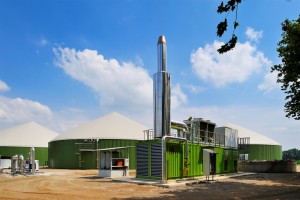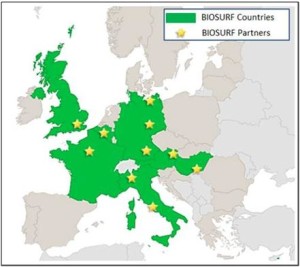
Currently, the production of biomethane is not equal to the national demand in various EU countries.
The development of a cross-border trading system for biomethane will provide a solution for addressing this discrepancy between national supply and demand levels, similar to the cross-border trading system for renewable electricity. The cross-border trade of biomethane is very limited today, as having a local, sporadic and non-standardised character. In most cases, the international biomethane trade is realised through physical road transport (rather than using the natural gas pipeline network).
The objective of BIOSURF (BIOmethane as SUstainable and Renewable Fuel) was to increase the production and use of biomethane (from animal waste, other waste materials and sustainable biomass), for grid injection and as transport fuel, by removing non-technical barriers and by paving the way towards a European biomethane market.
During the last three years, BIOSURF contributed to the development of a Common European Biomethane Market, by paving the way towards the achievement of the following funding pillars:
- Establishment of national biomethane registries in every European country
- Cooperation among the national biomethane registries
- European mass-balancing system for biomethane: recognize the European natural gas network as one single balance-circle
BIOSURF activities were carried out in line with the objectives of the project. Some activities are still in progress (e.g. introduction of guidelines by countries) but it is just a matter of time and activities of communication, negotiation as well as dissemination and engagement actions are part of the path to achieve those targets.
The most relevant outputs of the project received the attention of key stakeholders in each BIOSURF country. In particular, great interest was seen on the themes related to biomethane trade and the GHG emission reduction calculation method. The strong participation of experts and key stakeholders in the assessment of some important deliverables is an evident signal of the increasing importance that biomethane has been assuming in recent years.

It is important to underline that the BIOSURF project didn’t affect directly biomethane production and consequently is not directly responsible for the GHG emissions reduction in each BIOSURF member state but it must be said that the establishment of a common European biomethane market (that is exactly what BIOSURF has contributed to do) will indirectly impact this growth. Anyway, monitoring these indicators was a useful exercise that, together with the policy evaluation, helped understanding how biomethane market is evolving in the different countries.
One important result is the methodology developed that will have interesting implications for what concerns the GHG calculation methodology that will be presented in the RED II and this will have an impact in all the other European countries.
In addition, the most tangible result of BIOSURF is the establishment of the European Renewable Gas Registry (ERGaR) with the participation of almost all the “BIOSURF associations” that are also part of it. ERGaR is a BIOSURF product and constitutes its legacy: indeed, it will “survive” after the project’s end continuing what BIOSURF has started in the last three years for the European biomethane market.
Finally, Policy recommendation for policy makers were developed based on current policy framework and on impact analysis for the future development of the biomethane industry.
More information: http://www.biosurf.eu/en_GB/
Text by Stefano Proietti, ISINNOVA, Rome, Italy, BIOSURF Project
 BIOSURF was an EU-funded project under the Horizon 2020 programme under grant agreement No 646533. in the period January 2015-December 2017.
BIOSURF was an EU-funded project under the Horizon 2020 programme under grant agreement No 646533. in the period January 2015-December 2017.
The BIOSURF consortium consisted of 11 partners from 7 countries (Austria, Belgium, France, Germany, Hungary, Italy and United Kingdom).


